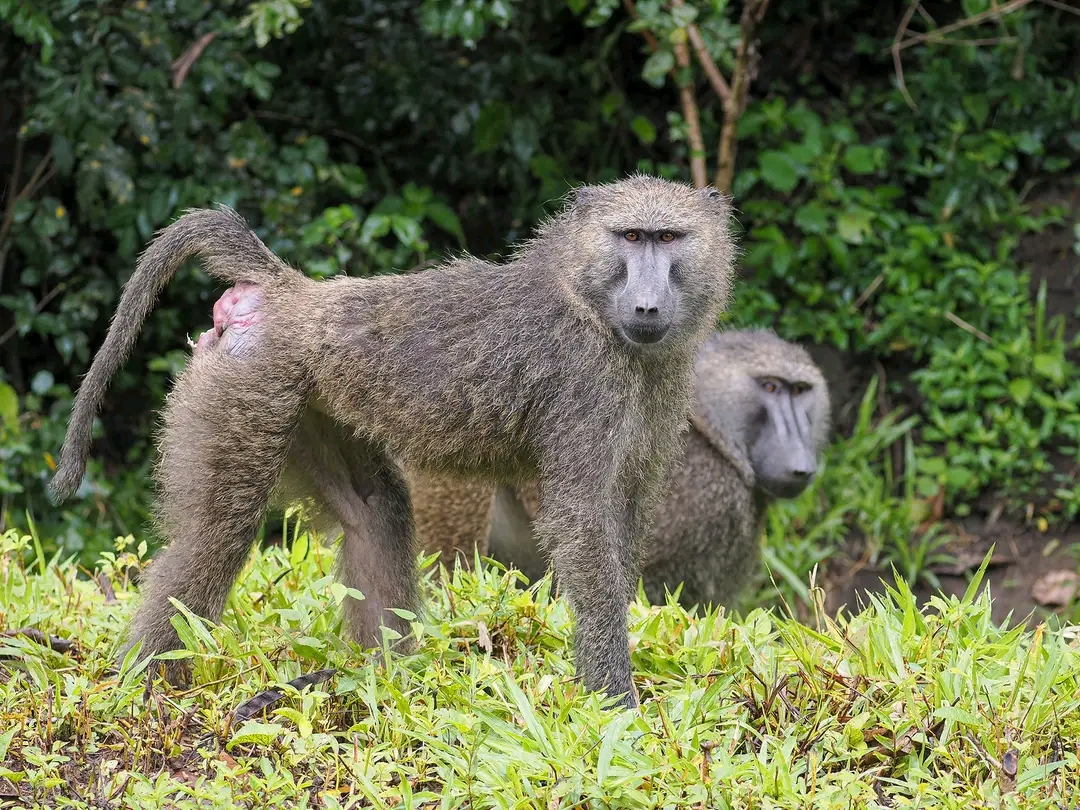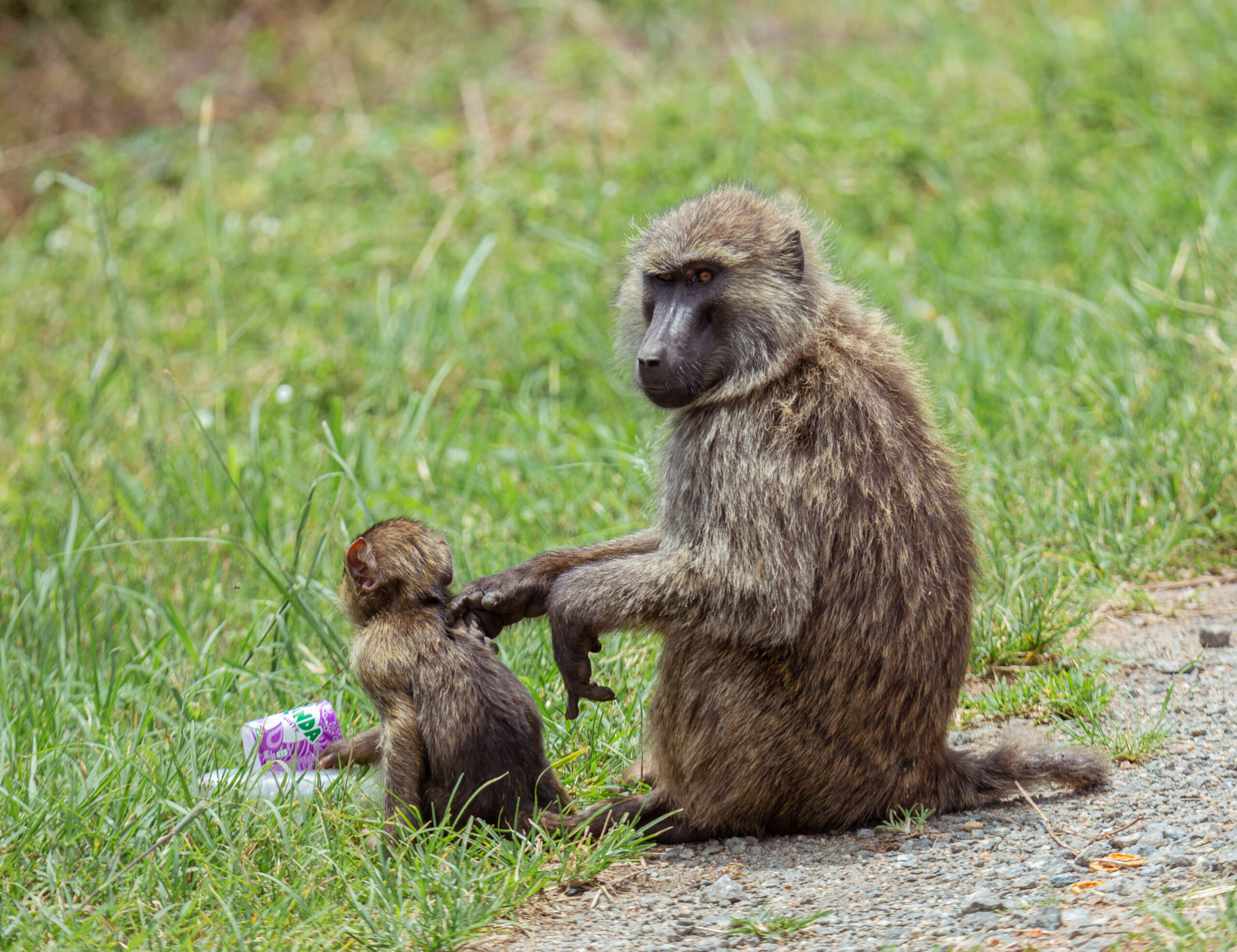Olive baboons, also known as the “Papio anubis”, are fascinating primates found in various regions of Africa, including the savannas and woodlands. Renowned for their complex social structures and adaptable behavior, these baboons possess unique traits that contribute to their successful survival in diverse environments. This essay delves into the locomotion, diet, habitat, reproductive patterns, physical appearance, social lifestyle, and territorial defense mechanisms of olive baboons, shedding light on their captivating existence.
Locomotion:
Olive baboons exhibit versatile locomotive abilities, employing both terrestrial and arboreal movement. They are primarily quadrupedal, moving on all fours, but are also capable of running upright for short distances. These agile primates possess elongated limbs, enabling them to leap between trees effortlessly. Their adaptation to various terrains makes them proficient climbers, facilitating navigation through dense forests or rocky landscapes with relative ease.

Habitat and Range:
Olive baboons are found across sub-Saharan Africa, from countries such as Kenya, Ethiopia, and Tanzania to Angola and Zambia. They occupy a wide range of habitats, including forests, savannas, grasslands, and gallery forests near rivers. Their adaptability allows them to thrive in both arid and more lush environments.
Where can I see Olive Baboons in Uganda?
Olive baboons are visible in various parts of Uganda, particularly in national parks and wildlife reserves. Some popular locations for observing these baboons include Kibale National Park, Queen Elizabeth National Park, Murchison Falls National Park, and Semuliki National Park. These parks offer opportunities to see a variety of wildlife, including olive baboons, in their natural habitats.

Diet:
As omnivorous creatures, olive baboons have a broad diet. Their primary food sources consist of fruits, seeds, leaves, flowers, and roots, supplemented by insects, small vertebrates, and occasionally larger prey such as small antelopes. Their ability to adapt their dietary preferences according to availability is a crucial factor in their survival in different habitats.
Reproduction:
Baboon societies are structured around a multi-level social system, with females forming the core social unit. Olive baboons are polygynous, with dominant males monopolizing access to females in their social groups. Breeding occurs throughout the year, with females typically reaching sexual maturity between four to six years of age. Gestation lasts for approximately six months, resulting in the birth of a single infant. Maternal care is critical, as infants are highly dependent on their mothers for nourishment, protection, and socialization.

Physical Appearance:
Olive baboons possess distinctive physical features. They have a robust build, with males weighing between 20 to 37 kilograms and females weighing between 10 to 15 kilograms. Their coat is olive-green or grayish, with varying shades among individuals. They have a hairless face, characterized by a long snout and prominent cheekbones. Males display a pronounced mane of hair on their neck and shoulders, adding to their majestic appearance.
Social Lifestyle:
Olive baboons are highly social animals, forming complex societies known as troops. Troops typically consist of multiple adult males, several adult females, and their offspring. Female baboons remain in their natal troop, while males disperse to join other troops upon reaching sexual maturity. The social hierarchy within a troop is determined by dominance, with dominant individuals having access to preferred resources and mating opportunities. Within their troops, baboons engage in grooming behaviors, which serve as social bonding mechanisms and help maintain group cohesion.

Territorial Defense:
Baboons protect their territories through a combination of vocalizations, physical displays, and occasionally, aggression. Males, especially dominant individuals, play a crucial role in defending the group from external threats. They emit loud vocalizations, barks, and screams to deter potential predators or rival troops. In confrontations, baboons exhibit intimidating displays, such as showing their teeth, arching their backs, and raising their fur, to establish dominance and discourage adversaries.
Conclusion:
Olive baboons exemplify a fascinating species with their adaptive locomotion, diverse diet, broad habitat range, intriguing reproductive patterns, unique physical appearance, complex social structures, and effective territorial defense mechanisms. By delving into the lives of these primates, we gain a deeper appreciation for the remarkable ways in which they have evolved to survive and thrive in their African habitats.







